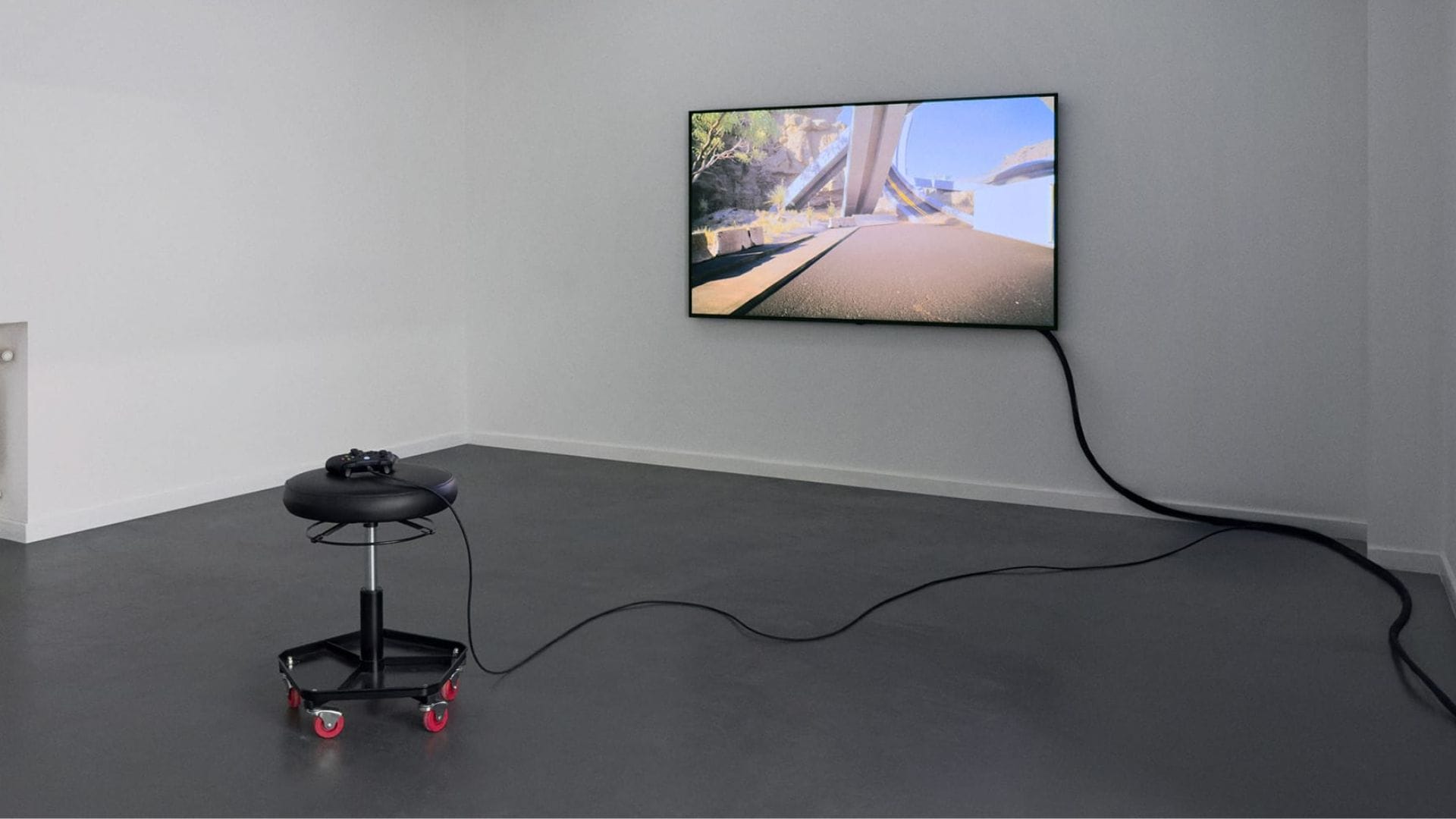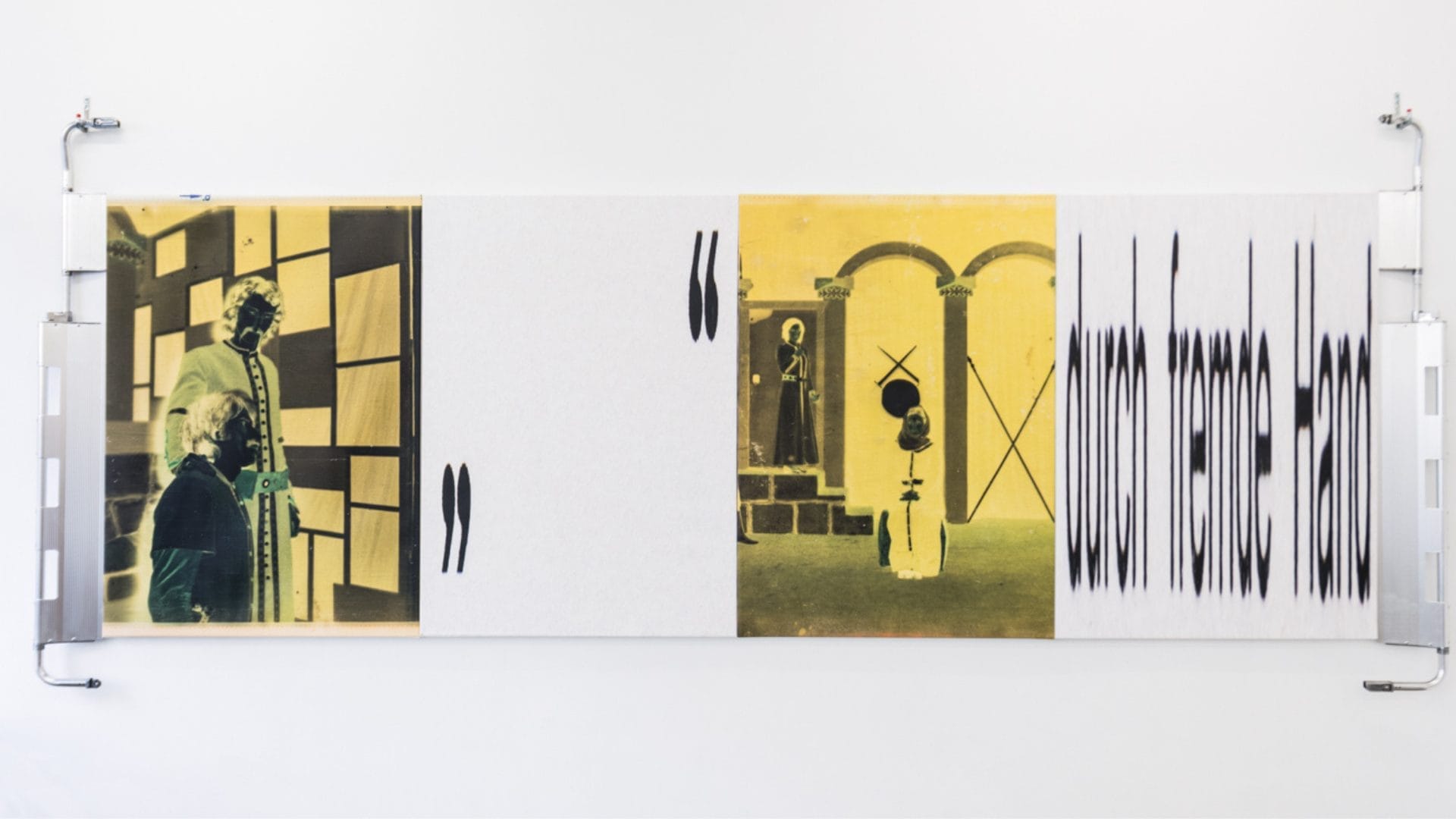
François Bellabas, unloadingoverdrive at Contretype, Brussels
unloadingoverdrive by François Bellabas at Contretype, Bruxelles, 16.01.2025 – 23.03.2025.
Artificial Intelligence: An Artistic Practice at the Crossroads of Worlds
Artist working between Paris and Los Angeles, François Bellabas harnesses digital technologies and artificial intelligence to interrogate the “augmented realities” generated from the photographic medium. Weaving connections between the physical and the virtual, he questions memory and image as data. In his work, the image becomes a plastic and sensitive material, serving as a vector of knowledge and imagination.
A graduate of the École Supérieure d’Art de Lorraine (ESAL) and the École Nationale Supérieure de la Photographie d’Arles, François Bellabas recently won the Prix Découverte from the Louis Roederer Foundation at the Rencontres de la Photographie d’Arles 2024 with his project An Electronic Legacy. Alongside his artistic practice, he co-founded the digital creation studio GourauPhong with Benjamin Roulet, positioning it ambitiously at the intersection of art, dissemination, and communication. This enterprise stands out for its research in photography, moving images, computer-generated imagery, and interactive installations. GourauPhong collaborates with brands, artists, and institutions, pushing the boundaries of creativity and developing visual languages where art and technology intersect.
The Nature of Traditional Photography vs. AI
Traditional photography, rooted in precise human and temporal parameters, arises from the encounter between a subject—sometimes distant from reality—and light. In contrast, artificial intelligence generates images from algorithms and data without a true understanding of the context in which they are situated. For François Bellabas, AI is not this alluring or threatening tool often discussed; it is capable of producing both disturbing and spectacular images that can disrupt our relationship with vision and representation. It is a vector that blurs the boundaries between the real and the virtual. By producing flows of organic and dematerialized images, it redefines our relationship with vision, representation, and space.
The exhibition as a journey from the real to the virtual
unloadingoverdrive unfolds as a multisensory installation where videos, photos, sculptures, and digital environments interact. At the border of the physical and virtual worlds, the exhibition invites visitors to explore a space in perpetual transformation, where these two dimensions constantly intertwine. It evokes a human condition increasingly shaped by networks—both material and immaterial.
The title unloadingoverdrive refers to a memory constantly readjusted by continuous data flows that traverse it, “refreshing” and regenerating itself while retaining traces of the content that has passed through. In a context where digital technology redefines the production, circulation, and reception of photographic images, unloadingoverdrive interrogates both the materiality and substance of the image as well as the experience we derive from it. Each work in the exhibition explores a different aspect of this transformation.
New Objects of Vision
Part of François Bellabas’s work is rooted in MOTORSTUDIES, an extensive database he has been developing since 2016 based on his travels in California, particularly in Los Angeles. This documentary library interrogates an urban fabric designed in networks, deeply marked by automobiles and engines, reflecting both a fascination with Californian visual imagery and a concern regarding an iconography that has become a cliché of Western culture and a metaphor for individuals in postmodernity.
Visitors are welcomed by what François Bellabas calls an “image-portal.” Unlike an image that addresses the gaze head-on, the image-portal opens up fields of possibility; it is an iconographic construction whose indeterminacy sparks curiosity and questions. For unloadingoverdrive, the chosen image-portal is Synthetic Roots_Network-01, a composition where cables, sheaths, and conductors intertwine to form a dense and almost organic structure. Immersed in this network’s heart, the eye delves into a space that evokes both mechanical power and human absence—a constantly evolving construction site dominated by a purely technical gaze.
This image-portal is complemented by MS_DATABASE_Blindshot_003. Assembled from reclaimed elements (screen, Raspberry), it is a photograph set as wallpaper, signaling that our computer wallpapers are images we live with constantly. This image-object draws inspiration from a form of signage that attempts to tension our consumption of images with the notion of landscape.
From Physical Matter to Algorithmic Image: An Exploration of Generative Models
The video work “Mumble of Silence” is one of the latest pieces in the artist’s visual and plastic research. Based on MOTORSTUDIES, it explores images reworked by algorithms and AI during successive activations. François Bellabas deconstructs and reassembles original images, exploring their multiple transformations and developments. He thus creates new photographic inputs in the form of sequences of moving images that highlight multiplicity, simultaneity, and fleeting perceptions while interrogating our knowledge and imagination.
Escape From L.A. [EFLA] Dust Reboot is an interactive installation where a joystick allows navigation through a virtual environment inspired by desert spaces as places in becoming—constantly evolving as they are updated with each activation. The work stages an infinitely variable desert landscape that constantly resets itself while modifying its decor and adding new objects and sculptures. The only constant element is an improbable white cube-shaped building inspired by the Centre Photographique de Marseille that witnesses a space where each exploration is unique. By adopting the perspective of the camera lens, visitors are invited to explore this perpetually changing virtual environment while offering François Bellabas opportunities to deploy images, texts, and sculptures within it.
Associated with Escape From L.A. [EFLA] Dust Reboot is Bloombyte System, a digitally created sculpture printed in 3D. It manifests the connection between physical matter and algorithmic image.
Paradoxical Images
The exhibition space is punctuated with images extracted from the Synthetic Roots series. These images explore memories integrated into open-source generative image models. They present themselves as photographs of latent spaces specific to these models—moments captured within flows of images generated by algorithms where representations of reality fracture.
Inscribed within an aesthetic close to “liminal,” Synthetic Roots_Landscape-01 and Synthetic Roots_Deepdream-01 belong to different families constituting this ongoing research project.
A central work in terms of its thematic significance—even if not materially imposing—MOTORSTUDIES_TIRERIBBON_Nearly Object represents the most paradoxical element of unloadingoverdrive. It presents itself as a representation of a cross-section through highway soil—a segment cut from asphalt. Computed design-wise and shaped volumetrically, this object-sculpture placed on the ground appears smooth yet immaterial… Its perfect execution and scaled proportions give it an artifact-like quality—a frozen image challenging our perception of reality.
Far beyond mere curiosity or distrust regarding algorithms and artificial intelligence, François Bellabas’s work opens up broad reflections on relationships between art, technology, and memory. In this debate, François Bellabas assigns artists a central role in reevaluating imagery in the digital age—not only concerning artistic fields but also regarding research and innovation.








fakewhale
Founded in 2021, Fakewhale advocates the digital art market's evolution. Viewing NFT technology as a container for art, and leveraging the expansive scope of digital culture, Fakewhale strives to shape a new ecosystem in which art and technology become the starting point, rather than the final destination.
You may also like
Joschua Yesni Arnaut, This Is Not For You at 1822-Forum, Frankfurt am Main
This Is Not For You by Joschua Yesni Arnaut, with collaborator Severine Henriette Meier (Per Yngve O
Nestor Siré, CubaCreativa [PC Gamer], “TOKAS Creator-in-Residence 2024,” Tokyo Arts and Space Hongo
“CUBACREATIVA [PC GAMER]” by Nestor Siré, curated by TOKAS, at Tokyo Arts and Space Hon
Christie’s in conversation with Fakewhale
Introducing Sebastian Sanchez Digital Art @Christie’s Visit Christie’s 3.0 Christie’s




